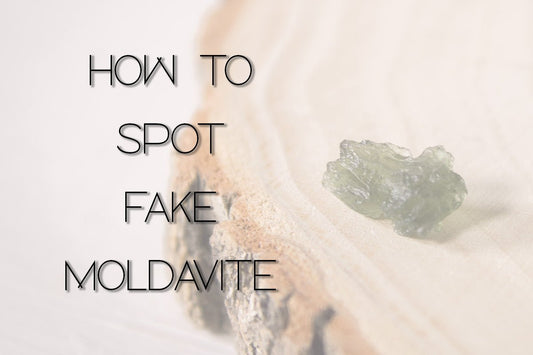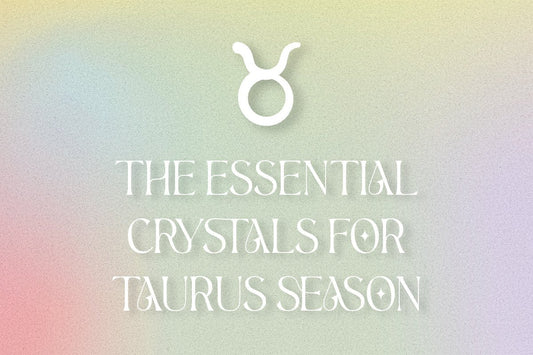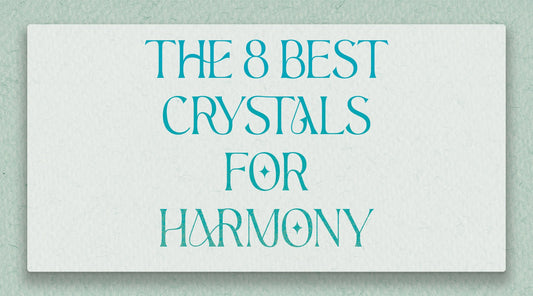How to Spot Fake Moldavite
Erin EvelynShare

With Moldavite rising so quickly in popularity, fakes are everywhere. Whether you're a collector or using it for spiritual work, it’s important to know how to tell the real deal from convincing fakes.
Here is our guide to help you spot fake Moldavite:
Start by examining the surface texture.
Real Moldavite has a very distinct, natural appearance. Its surface is typically wrinkled, pitted, or etched with intricate patterns that formed as the molten material cooled after the meteorite impact. These patterns often look like tiny grooves, waves, or ferns. If the surface looks too smooth, shiny, or glassy it may be fake. Many imitations are made from green glass poured into molds, which can leave them looking too perfect or symmetrical.
Take a close look at the bubbles inside.
Authentic Moldavite crystals often contains small air bubbles, some elongated due to the force of the impact. These inclusions appear randomly throughout the piece and vary in shape and size. Fakes, on the other hand, tend to have perfectly round, evenly spaced bubbles or no bubbles at all, suggesting they were formed under controlled, man-made conditions.
Make sure the color matches.
Color is another giveaway. Genuine Moldavite usually ranges from olive green to deep forest green, with some variations depending on the locality. The color should look natural and may vary within the same piece. If the green is too bright, neon, or consistently vibrant, it's likely an imitation. Many fakes are made from colored glass that just doesn’t have the earthy, organic tone of the real thing.
Beware of a too good to be true price tag.
Moldavite is rare and becoming more scarce, so if a piece is being sold at an unusually low price or the seller can’t confirm that it came from the Czech Republic (especially the Bohemian region), be cautious. Reputable sellers will often list specific localities like Besednice or Chlum, which are known Moldavite mining sites. If the origin is vague or suspicious, it’s a red flag.
Trust your intuition.
Finally, if you're energetically sensitive, trust how it feels. Many people describe a physical reaction to genuine Moldavite, often called the “Moldavite flush.” It may feel warm in your hand, give you tingles, or trigger an emotional or energetic shift. Fake Moldavite typically feels like… well, nothing. Just a piece of glass.
When in doubt, buy from trusted crystal shops or sellers with strong reputations and good reviews. Always ask questions, request close-up photos, or look for listings that show you the exact item you'll be receiving instead of generic ads. With a little awareness and attention to detail, you’ll be better equipped to spot authentic Moldavite and avoid getting fooled by the fakes.




